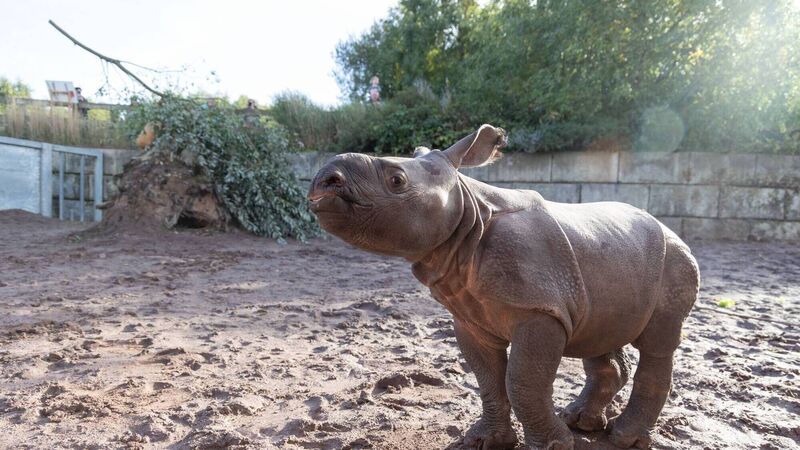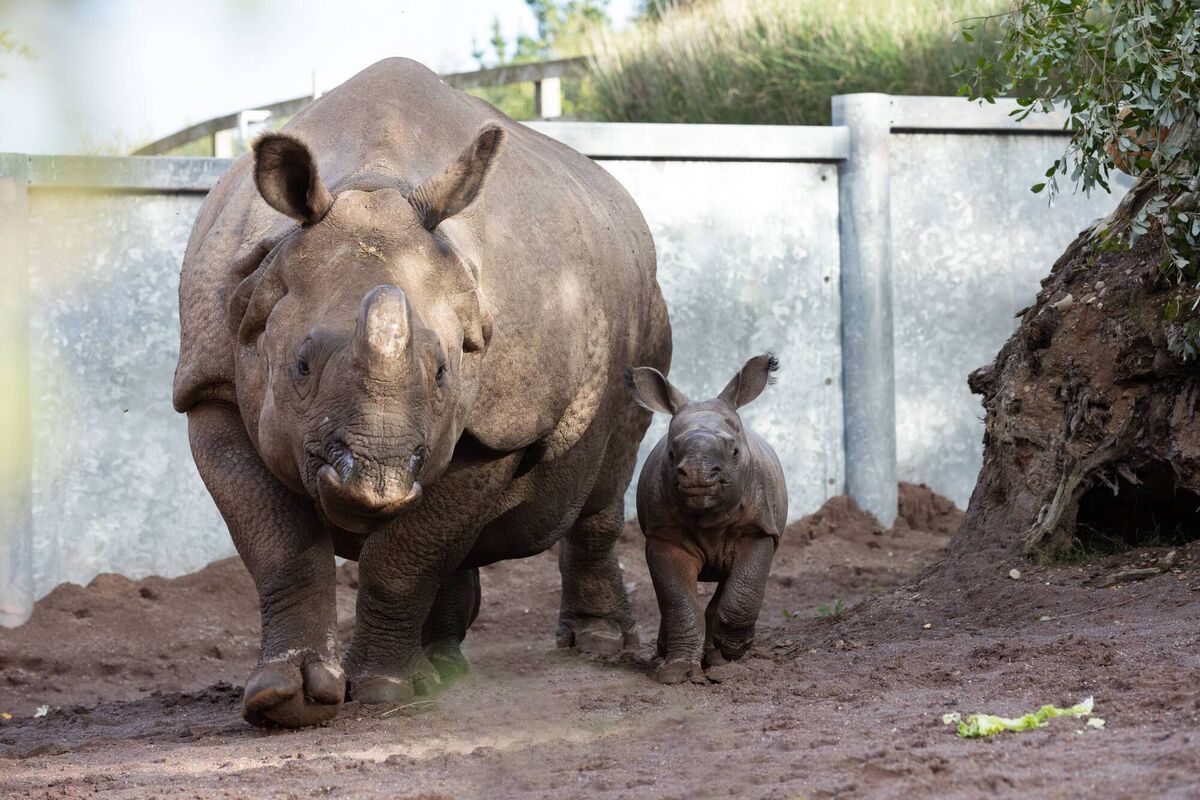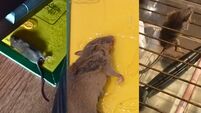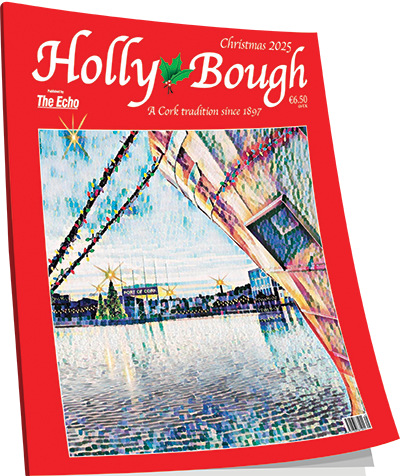Fota makes history as first baby Indian rhino ever born in Ireland is born at the wildlife park

Fota Wildlife Park announced a first in its 39-year history and a first for Ireland; a baby Indian rhino was born on September 19 to mother, Maya and father, Jamil. Photo Darragh Kane
Cork’s Fota Wildlife Park has made history as the first ever baby Indian rhino ever to be born in Ireland has been born in Fota.
The yet unnamed male calf is the second of only three Indian rhino calves born in any zoological institution this year.
The calf was born on September 19, after a gestation period of 16 months, to mother, Maya and father, Jamil.

Maya was born in Rotterdam Zoo and is almost 10 years old.
She came to Fota Wildlife Park in early 2020, just before Covid-19, as part of the ex-situ European Endangered Breeding Programme (EEP) from the French Zoo, the Botanical Garden Branfér, Nantes.
She is the only female Indian rhino residing in any Irish zoological organisation.
Jamil, who is nine years old, was born in ZSL Whipsnade Zoo in the UK and came to Fota in June 2015. Both rhinos weigh approximately two tonnes each.
“Fota Wildlife Park is delighted to announce the first baby Indian rhino, hopefully, the first birth of many to come. Both mother and baby are doing really well,” lead ranger Aidan Rafferty said.
As yet on limited view to the public as he’s inside the Rhino house with his mother and is gradually getting accustomed to going outside for brief periods. The best opportunity to see him is later in the afternoon. See link for more & help suggest name! https://t.co/072iANgKXN pic.twitter.com/QKhpbUvnDz
— Fota Wildlife Park (@fotawildlife) October 13, 2022
“Maya is very protective and is constantly by his side.
“At the moment, he’s not on view very often to the public as he’s inside the Rhino house with his mother and is gradually getting accustomed to going outside for brief periods.
“The best opportunity to see him is later in the afternoon.
“As he gets older and stronger, he’ll be introduced to the remainder of the Rhino habitat, which features grass meadows, mud pools and a lake area,” Mr Rafferty continued.
The Indian rhino is listed as vulnerable by the International Union for Conservation of Nature (IUCN), with 3300 living in the wild.
The illegal trade of poaching rhino horn for traditional medicine poses the biggest threat to the species.
The Indian rhino is the largest rhino species and is also known as the greater one-horned rhino.
It possesses highly distinctive armour-like skin and a single horn that can be up to 60cm in length, making it an easily recognisable animal.
Its single horn distinguishes the Indian rhinoceros from its African counterparts, who possess two horns.
The one-horned Indian rhino, once widespread throughout parts of Asia, suffered population decimation due to hunting and poaching and was close to extinction at the start of the 20th Century.
Nearly 85 percent of the global Indian rhino population is concentrated in Assam province, India, with 70 percent of this population in the Kaziranga National Park.
Of the other two Asian rhino species, about 100 Sumatran rhino and less than 50 of the Javan rhino are left in the wild.
There are now four Indian rhino at Fota Wildlife Park, Maya, Jamil, the new calf, and a non-breeding male, Shusto.
Fota Wildlife Park is asking the public to help name the new male rhino calf.
To suggest a name and be in with a chance to win a conservation annual pass, see www.fotawildlife.ie/news.







 App?
App?





